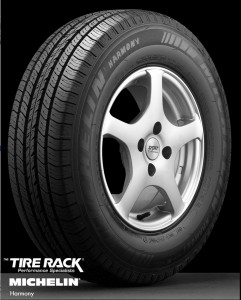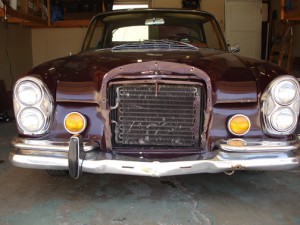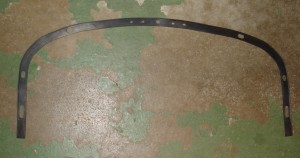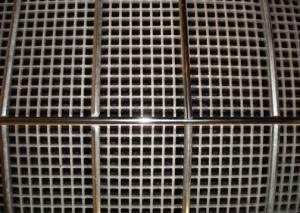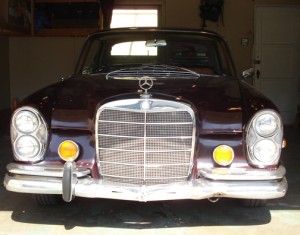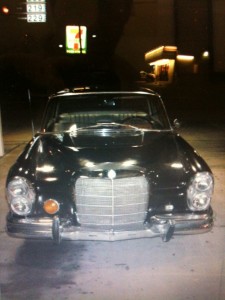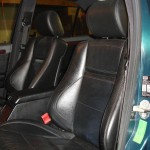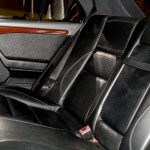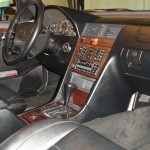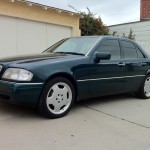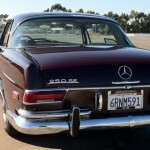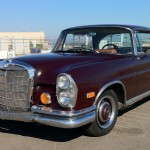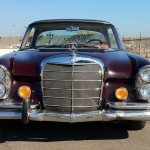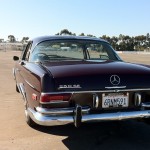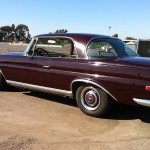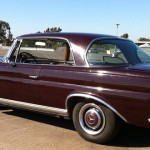The first lesson I’ve learned is that I will NEVER again drive a newly acquired classic home. The next one comes home on a trailer.
The brakes felt OK, not great, but OK when I test drove the car and I had not actually closed the hood myself. So on the way home, which included to short freeway hops, I was wondering about the shake I could see the hood doing but dismissed it as just out of adjustment. The real attention-getter came after I exited the freeway and the brake pedal went to the floor.
I looked down and could not, for the life of me, remember where the emergency brake was. A quick couple of pumps of the brake pedal brought the pressure up just in time to prevent a shunt with a unsuspecting Honda. I figure the Benz would have won that one though.
Classic Mercedes gently tucked into the garage I decided that I had best begin with the brakes.
After a quick look around the brake system there didn’t seem to be any leaks but the pads and disks were looking a little thin so I ordered front and rear disks and pads from AutohausAZ and picked up a brake bleeder vacuum test kit from Sears for $60.
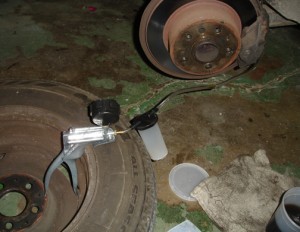
I also bought a set of small deep metric sockets. A friend who owns a couple of classic Mercedes advised me not to try to first open the brake bleed valves with a wrench as there’s a really good chance of them being a bit stuck and the chances of rounding things off with a wrench are pretty high. He suggested using a deep 9mm socket to loosen the bleeder valves and use the wrench only for the actual bleeding.
I had never used a vacuum bleeder setup so I looked to YouTube for a video and found a training video that I think was posted by Sears but I seem to have mislaid the link.
The fluid that came out was darker than black coffee. It should be a light, clear yellow color.
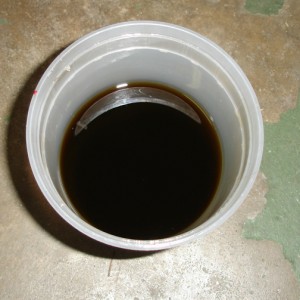
I did a little research and learned that over time the non-synthetic brake fluid is designed to absorb water from the brake system to prevent corrosion. The synthetic won’t do this so is really on suitable for racing applications. I also learned that I had not use the right type of brake fluid in performing the flush of the brake system. I used DOT3 and Mercedes calls for DOT 4 non-synthetic which is nearly impossible to find, even here in car-crazy Southern California. All the car parts places have synthetic for DOT4 and 5. The only place I found it was at the dealership. $20 for 1 liter. So one more flush is coming.
After the first brake fluid flush I took the car out for a test drive and the brakes had vastly improved and no hint of any more pedal to the floor.

